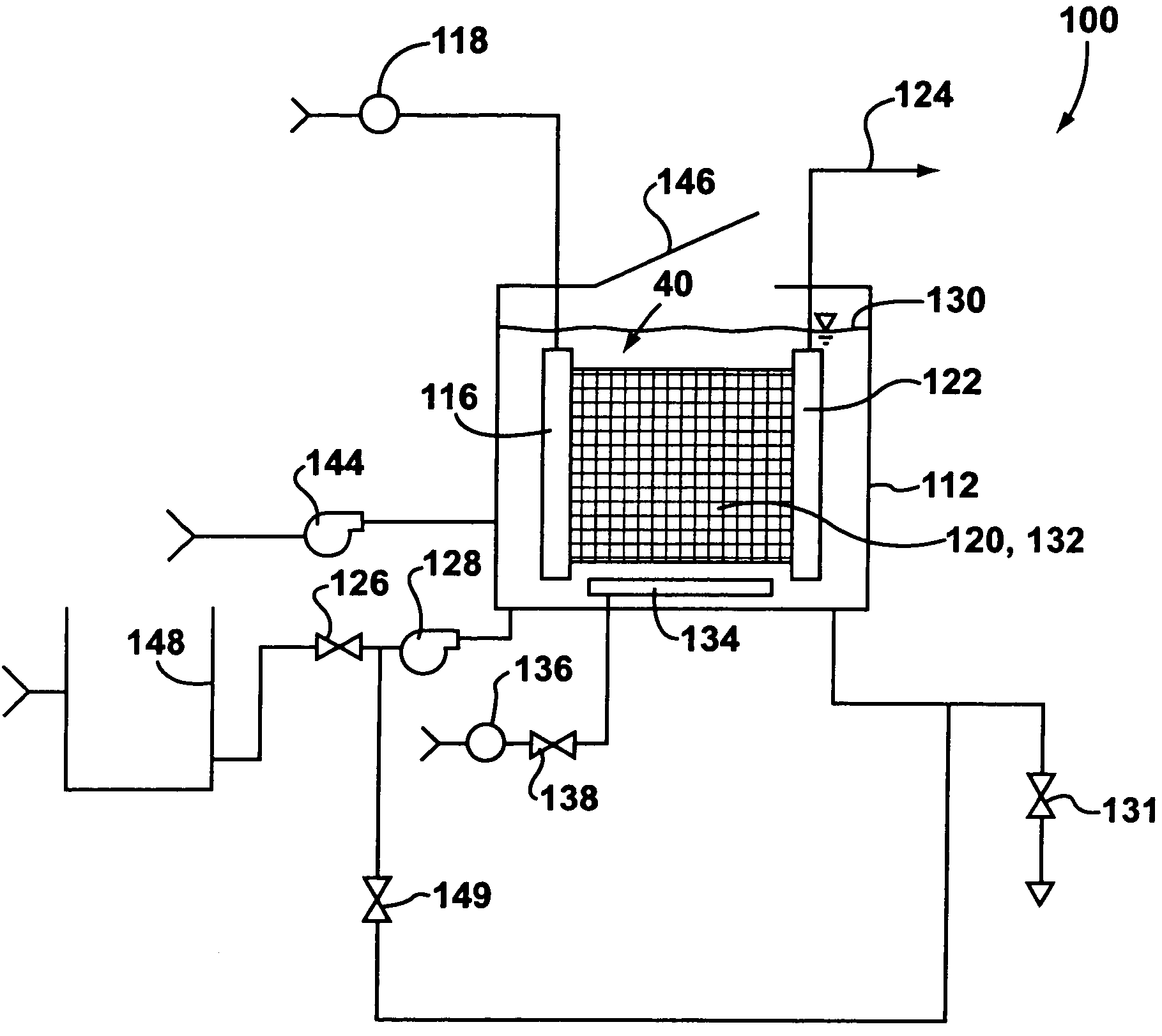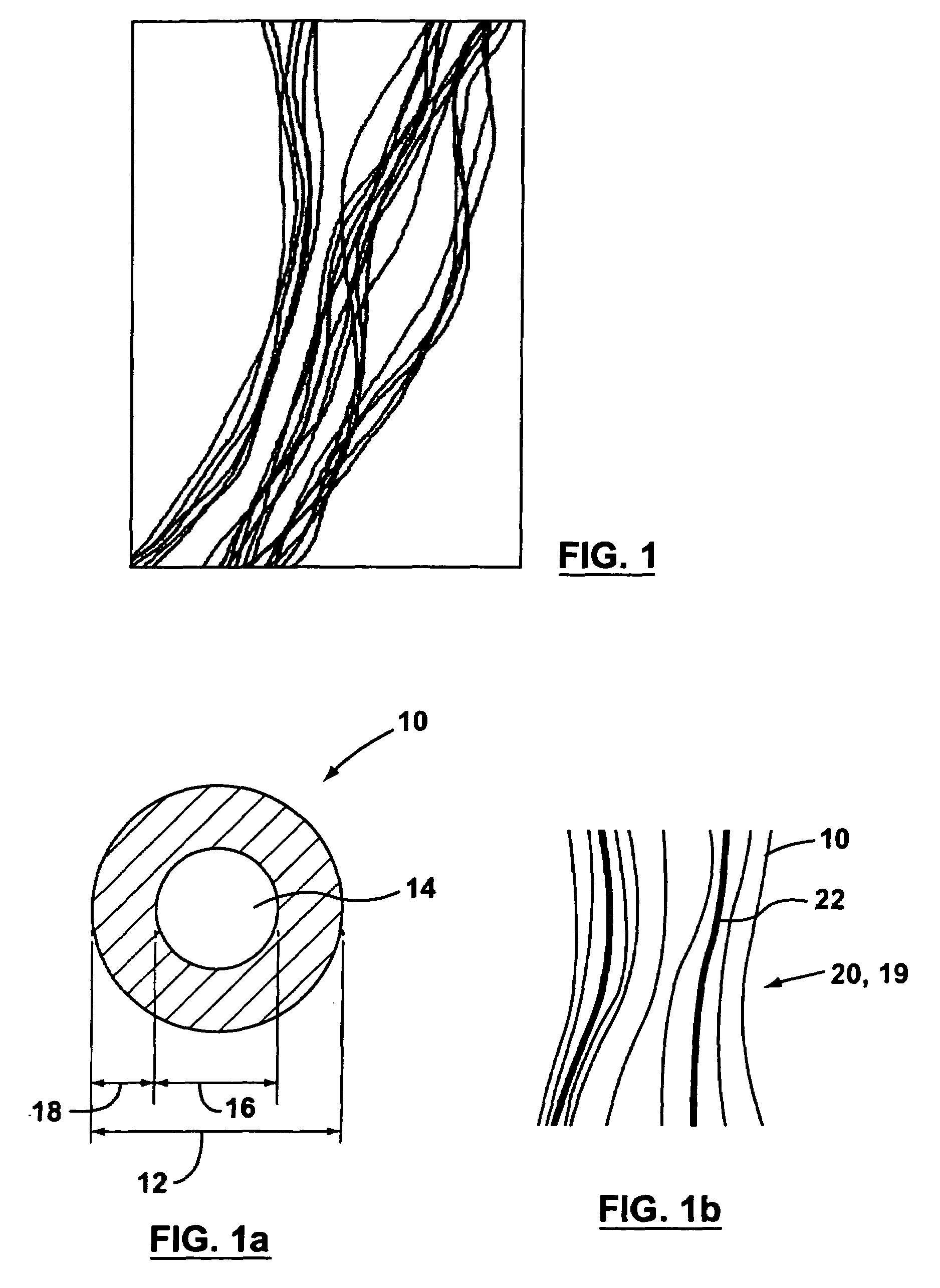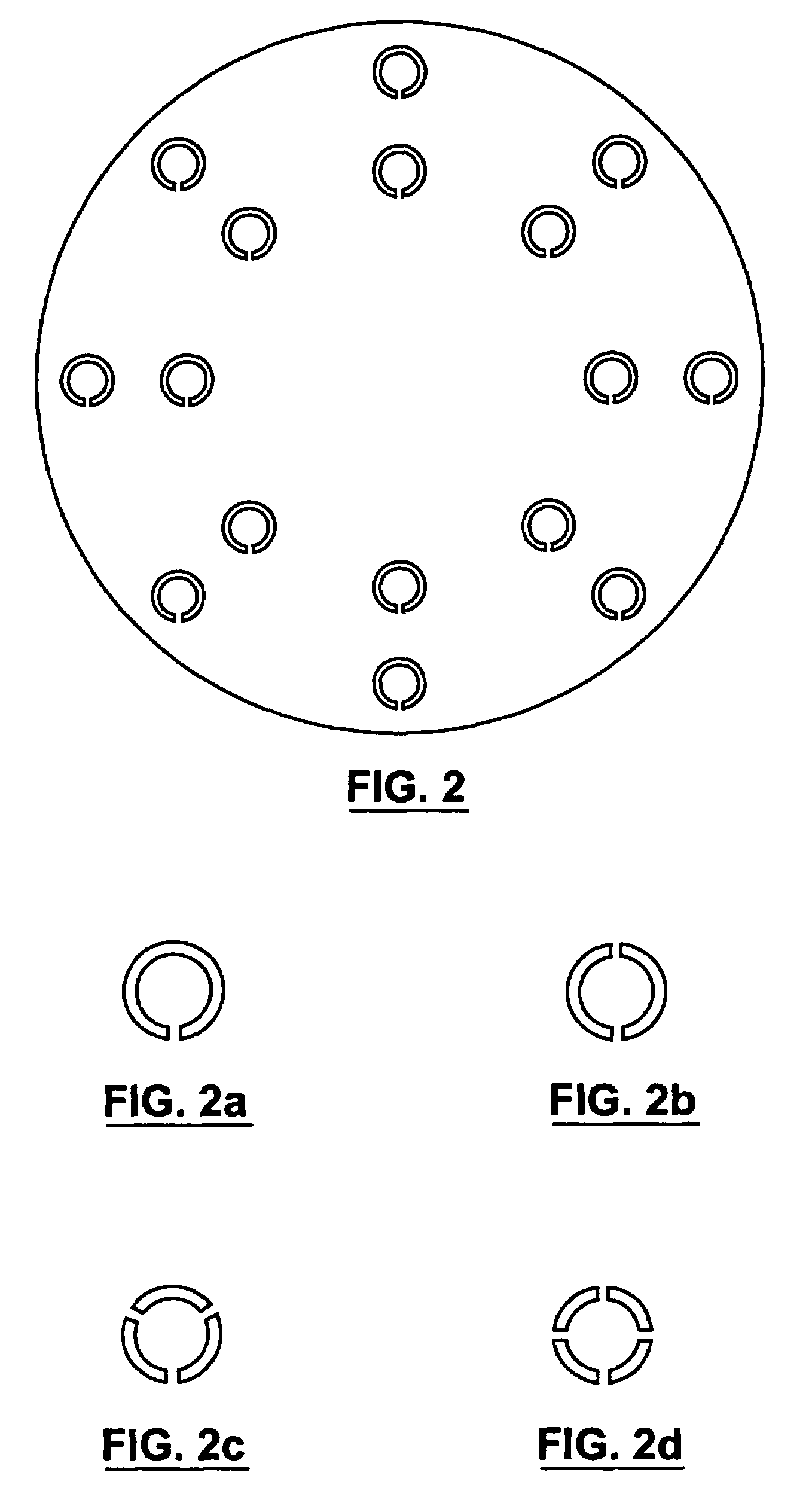Supported biofilm apparatus and process
a biofilm and apparatus technology, applied in the direction of membranes, filtration separation, separation processes, etc., can solve the problems of significant decrease in flux rate, high cost of thermoplastic polymers, so as to speed up the biological digestion reaction and facilitate the building of modules with minimal reduction in the effective surface area. , the effect of improving the effect of air
- Summary
- Abstract
- Description
- Claims
- Application Information
AI Technical Summary
Benefits of technology
Problems solved by technology
Method used
Image
Examples
example 1
Chemical Oxygen Demand (COD) Reduction in a Membrane Supported Bioreactor
[0132]A bench scale bioreactor was made using a module generally as presented in FIGS. 6-9 except that only a single sheet of the fibres was used. The length of the sheet was 0.57 m and height 0.45 m, providing a total biofilm area of approximately 0.5 m2 assuming a with both sides of sheet available for biofilm growth. The ratio of surface area for gas transfer to surface area of attached biofilm was between about 5 and 6. Inlet air flow was 25 ml / min at a pressure of 34.5 kPa. Reactor volume was 30 L. Synthetic wastewater with a COD level of 1000 mg / l was introduced in a batch manner periodically. The synthetic wastewater consisted of 1.0 g / L of soluble peptone and 0.03 g / L of sodium hydrogen phosphate dissolved in tap water. A series of batch reactions were conducted to determine the rate of reaction and oxygen transfer efficiency. FIG. 21 presents the results of three batch periods: a three day period form ...
example 2
Bench Test with Synthetic Wastewater
[0133]A bench scale bioreactor was designed using a single sheet module as described for Example 1. Synthetic wastewater with a COD level of 1000 mg / l, as described in Example 1, was introduced and treated by the biofilm on the module. Rates of COD removal and oxygen transfer and the thickness of the biofilm were calculated or measured and recorded. For about the first 21 days, the reactor (which has a 30 L fill volume) drained and re-filled with feed after variable batch periods to keep the CODs in the tank generally between 500 and 1000 mg / L. At day 8 and day 16, in addition to emptying the tank and re-filling it with new feed, the module was powerwashed with a water sprayer to remove biofilm. From about day 21 to day 30, the biofilm was subjected to starvation (i.e. the tank was filled with tap, i.e. clean or drinkable, water while oxygen supply continued to the module) and air scouring treatments. On about day 30, the tank was emptied and re-f...
example 3
Pilot Study with Industrial Wastewater
[0134]A small pilot study was conducted using four modules generally as shown in FIGS. 6 to 9. Each module has 6 sheets of fibers and a total planar surface area, or area of biofilm, of about 3.6 m2, and a ratio of surface area for gas transfer to surface area of attached biofilm of between about 5 and 6. The modules were installed in a 300 litre tank. The reactor was initially operated with peptone (about 2000 mg / l) and then peptone added to wastewater in a declining ration to accelerate the initial growth of biofilm on the sheets but then acclimatize the biofilm to the wastewater. After acclimatizing the biofilm, batch operations were conducted, filling the tank with industrial wastewater. The wastewater was drawn from multiple sources in ratios chosen to create an feed COD of about 3000 mg / l. “Pure” oxygen was supplied to the modules at a feed pressure of about 5 psi. As shown in FIG. 23, bulk CODs concentration dropped to less than 1000 mg / l...
PUM
| Property | Measurement | Unit |
|---|---|---|
| size | aaaaa | aaaaa |
| thickness | aaaaa | aaaaa |
| thickness | aaaaa | aaaaa |
Abstract
Description
Claims
Application Information
 Login to View More
Login to View More - R&D
- Intellectual Property
- Life Sciences
- Materials
- Tech Scout
- Unparalleled Data Quality
- Higher Quality Content
- 60% Fewer Hallucinations
Browse by: Latest US Patents, China's latest patents, Technical Efficacy Thesaurus, Application Domain, Technology Topic, Popular Technical Reports.
© 2025 PatSnap. All rights reserved.Legal|Privacy policy|Modern Slavery Act Transparency Statement|Sitemap|About US| Contact US: help@patsnap.com



